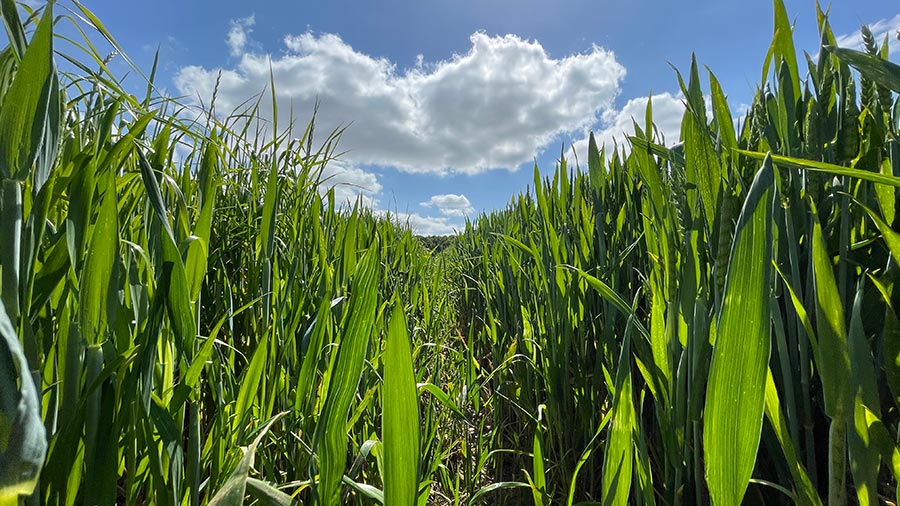Advertiser content
Herbicides: Weed control strategies for success
Provided by
ADAMA is a leading manufacturer and distributor of crop-protection solutions. With a heritage of nearly 70 years and over 4500 employees in more than 120 countries, ADAMA has world-leading expertise in a range of product categories including a full range of fungicides, herbicides, insecticides, plant growth regulators and molluscicides.
ADAMA’s crop protection products are available in the UK through leading agro-chemical distributors and agronomy companies.
Technical helpline 01635-876-622
 © ADAMA
© ADAMA Weed management
Following a very difficult autumn for residual herbicides, we are forced to look forward at where we go now and how to best control weeds in existing crops and those yet to go in.
The success of the autumn herbicide campaigns differs from region to region but cover anything from no herbicides at all, to pre and post-ems getting on and working well (albeit this scenario is few and far between).
So, what next?
Generally, we can split it into 3 scenarios:
1. “I drilled my winter wheat this autumn and the heavens opened before I managed to get the residual chemistry on. The wheat looks ok but there is plenty of weeds about – what can I do?”
2. “I managed to get either a pre-em or early post-em on my wheat and was lucky to dodge some of the rain, but now there is another flush of grassweeds emerging! – What can I do?”
3. “I’m focussed on spring cropping now, spring barley mainly but also alternative crops such as rye, triticale and maize – what are my options?”
Introducing spring-sown crops into the rotation gives growers the opportunity to use stale seedbeds (when the season allows) to control weeds.
And, where non-cereal crops are being grown, alternative herbicide active ingredients can be used to control stubborn broad-leaved weeds and troublesome populations of black-grass, ryegrass and brome.
But effective weed control is about much more than the application of chemicals, with growers encouraged to implement a range of integrated management techniques into their production cycles:
- Alternative spring crops such as beans and oilseed rape offer growers the option to apply an alternative range of herbicides which includes some MOA’s that are in the same chemical family as others used on cereals but not selective to cereals. In seasons that allow stale seedbeds can be used as an effective weapon in the fight against difficult grass weeds: up to 80% black-grass control is achievable, but only where the field has been properly cultivated in the autumn and has minimal disturbance in the spring to prevent additional weed germination.
- Grassweed populations have co-evolved with winter cereals, with weed populations tending to be biased towards autumn germination. As a result, fewer grassweeds typically emerge in the spring. Switching to spring planting therefore gives the opportunity to reduce the seedbank of autumn emerging grassweeds.
Herbicide strategy
The best levels of weed control will be achieved when and where a sequence of herbicides is applied at the correct timing and frequency.
The prevailing weather conditions should always be taken into consideration, not only to ensure herbicides work effectively, but also to reduce the threat of these chemicals entering and polluting water courses.
|
Competitive ability of common arable weeds in wheat |
|
|
Competitive ability |
Weed |
|
Number of plants /m2 that would typically result in a 5% yield loss in wheat |
Species in italics have a high feed rare for seed-feeding birds and herbivorous insects |
|
Very competitive (1-5) |
Barren brome, cleavers, Italian rye-grass, wild-oat |
|
Competitive (12-17) |
Black-grass, black-bindweed, charlock, common poppy, creeping thistle, scentless mayweed |
|
Moderately competitive (up to 25) |
Chickweed, fat hen, forget-me-not, redshank |
|
Less competitive (50 and above) |
Common fumitory, scarlet pimpernel, shepherd’s purse, dove’s-foot crane’s-bill, red dead-nettle, annual meadow-grass, knot-grass, groundsel, common speedwell, field pansy |
|
Information taken from Marshall EJP Brown VK, Boatman ND et al. (2003) |
|
Competitive ability of common arable weeds in wheat |
||
|
Longevity |
Grasses |
Broad-leaved weeds |
|
Under 1 year |
Soft brome, rye brome, barren brome, volunteer cereals, oats |
Volunteer sunflower, linseed |
|
1-5 years |
Perennial ryegrass, black-grass, winter wild-oats |
Chickweed, crane’s-bill, creeping thistle, mayweed |
|
Over 5 years common |
Wild-oat, loose silky bent, Italian rye-grass, orache and many others |
Black bind-weed, charlock, poppy, speedwell, volunteer rape |
| Source: HGCA AHDB 2014 | ||
Take the quiz and earn Basis points
This article is part of a three-part course brought to you by ADAMA. You can read the full course and take the quiz to gain Basis points in our Learning Centre.
